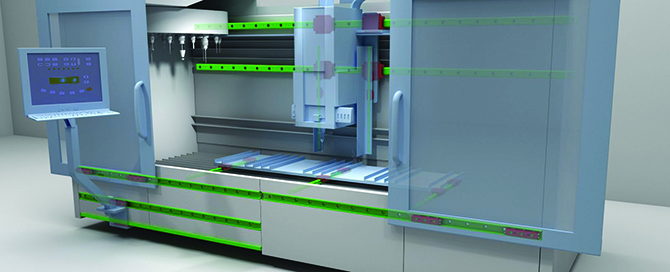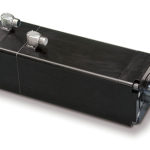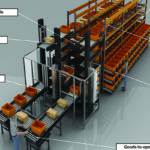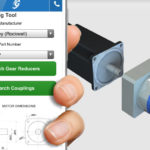Axes on cnc machining equipment to allow spindle movements are mission critical — requiring high accuracy. But doors and other linear axes have different design requirements — with forgiveness and ruggedness being priority instead. Now, linear bearings from Rollon Corp. help some CNC machine builders trim cost and improve reliability by satisfying these unique design requirements.

CNC machining equipment usually include large sheet-metal doors subject to exposure to metal chips and cutting fluids as well as deflection and misalignment. Here, recirculating-ball linear bearings (so commonly chosen for these doors’ slides) are a poor choice because they require careful mounting to precision surfaces and careful alignment that’s quickly voided by any deflection of the sheet metal doors; with little clearance between balls and raceways they’re also susceptible to damage through contamination by highly destructive metal chips. These metal products are made through laser cutting or metal stamping services.
In contrast, self-aligning Rollon Compact Rail linear bearings include large rollers on nonidentical twin rail profiles — in some cases, employing Compact Rail U and K rail profiles. Here, the U-style rail has a flat raceway to let rollers translate in and out relative to the rail’s axial direction. K-style rail geometry allows slight angular rotation of the roller but maintains linear guidance. Together, the rails absorb parallelism errors on the horizontal plane and height differences between rails on the vertical — to 4 mm and ±50 mm respectively in installations with 2-m spans.
Elimination of misalignment means no binding; that and a coefficient of friction of 0.003 to 0.006 makes for smooth opening and closing. Plus the linear bearings’ seals and wipers, acceptance of upside-down installation, permanently sealed ball bearings, and roller bodies large in relation to metal-chip size all make for rugged resistance to contamination.
Read more about this year’s Motion Trends in linear-slide systems (and simple-to-install and pre-integrated variations) here. Also check out the Motion Trends piece: Electric actuators displace other motion options — including manual designs.







Leave a Reply
You must be logged in to post a comment.